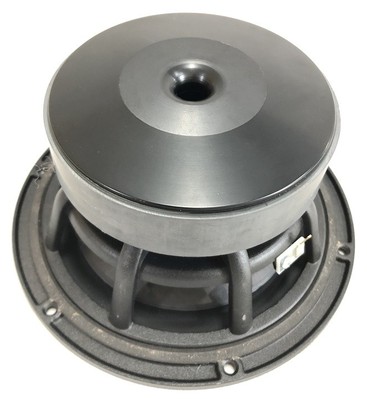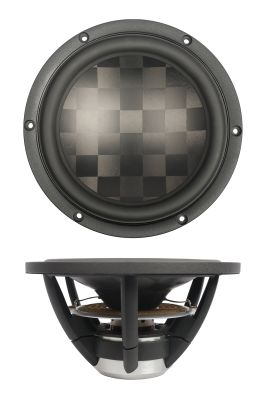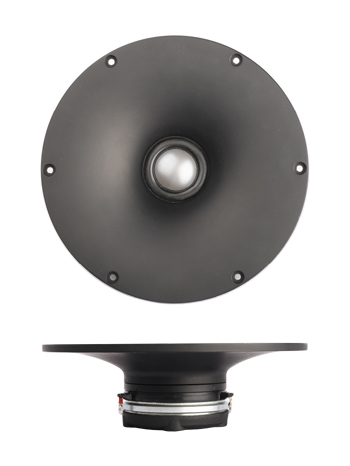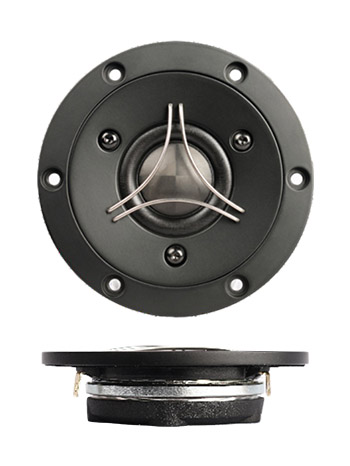600W is double 300W - that means 3db SPL difference if I remember correctly
You're right, of course.
It's complicated

But my comments do not refer to the manufacturer's specifications (no problem with that), but to the following quote:
One thing I still don't entirely understand is the dynamic capabilities. In response to people comparing the measurements of the S7t to the Revel F328Be, I remember @Matthew J Poes mentioning that one thing that doesn't show in the measurements is that the Perlisten will get 10?dB louder. How is this possible?
(Highlighting by me)
I wanted to point out with my remarks that not all statements, to an without question very good loudspeaker, are realistic, but can be due to the self-induced enthusiasm of the reviewer and referred to the maximum thermal load capacity of the loudspeakers. The thermal load capacity of the installed drivers in the Perlisten speakers definitely do not allow a 10dB higher power handling than the Revel F328.
Since I assumed that measurements on THD related limits (3% or 10% THD) would not be available from the same source and under comparable conditions.
But Matthew then clarified that the quoted statement of him explicitly refers to a THD limit of 3% and does not mean the thermal load limit of the speakers:
You don’t need the driver thermal power handling. You need the actual maximum SPL test data. There are a handful of maximum SPL test methods used in the industry and all five different results. The Perlisten figure of 117dB comes from a THD limit. It’s 3% THD at 2 meters. My 10dB comment was based on the only figure I had from Revel, which I don’t have immediately at my fingertips. It was a higher distortion threshold. I then Asked Dan the SPL of the Perlisten at that distortion and we extrapolated out what the likely difference would be for the maximum SPL of the Perlisten, which we knew, vs if the Revel was pushed to that limit. we came to 10dB.
It was an estimate. To know for a fact both would need to be measured in exactly the same way at the same time. Keep in mind that over most of the treble range the Perlisten has three tweeters operating at the time time. The beam forming tech offers a significant SPL advantage over most single tweeter designs.
Unfortunately, we do not have distortion measurements of the two speakers from an independent source.
But we do have measurements from
@hardisj of smaller speaker models that use the same mid-high units as the F328 and S7t.
EAC
Revel PerformaBe F226Be
EAC
Perlisten S4b
Under fair conditions in the low frequency range, the F328 should actually be able to keep up with the S7t, if the three 8'' woofer are high quality.
So then let's compare the harmonic distortion of the two speakers in the range above 500Hz:
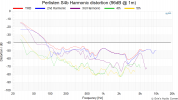
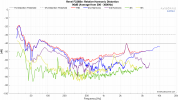
It is probably safe to assume that the Revel mid-high unit will reach the 3% limit slightly earlier than the Perlisten unit, due to the THD peak around 2.3kHz (this could be the increased HD3 of a breakup resonance of the Revel midrange driver).
Whether it will be equal to 10dB sound pressure level difference I can not predict.
For 104dB, Erin did an HD measurement of the F226 speaker, there the mid/high unit of the F226/F328 is not far from the 3% THD limit:

So I would agree with Matthew's statement, with certain reservations.
Perlisten S7T uses 1 driver only above 4 Khz. I believe this matters.
For the absolute maximum power handling of the speakers, the tweeters or midrange drivers will probably set the limit - if the motors of the woofers are equipped with correspondingly large voice coils in both speaker.
If the two midrange drivers of the S7t are only equipped with 1'' voice coils, their thermal power handling might even be lower than the single midrange driver of the Revel.
600W is double 300W - that means 3db SPL difference if I remember correctly
If you meant that I made a mistake in calculating the power factor for 10dB higher maximum SPL of the S7t compared to the F328, then I have to agree with you there too (it's not 3.2, but 10x) - will correct the statements in the
original post.




